On the road of cryptocurrency trading, I have worked my way up from a small retail investor with 6,000 yuan to becoming a middle-class with 50 million!
Today, I will share my insights from my journey with everyone.
The most important thing in cryptocurrency trading is capital management; do not invest all your money at once. I habitually divide my funds into five parts and only use one part for operations each time. This way, even if I incur losses, I won't be too heavily burdened. Moreover, I have set a rule for myself: if I lose 10%, I will immediately withdraw, regardless of the market situation. If I lose 10% five times in a row, I've only lost 50%, but if I make a profit, the returns can be much more. Even if I encounter a situation where I'm stuck, I can maintain my mindset.
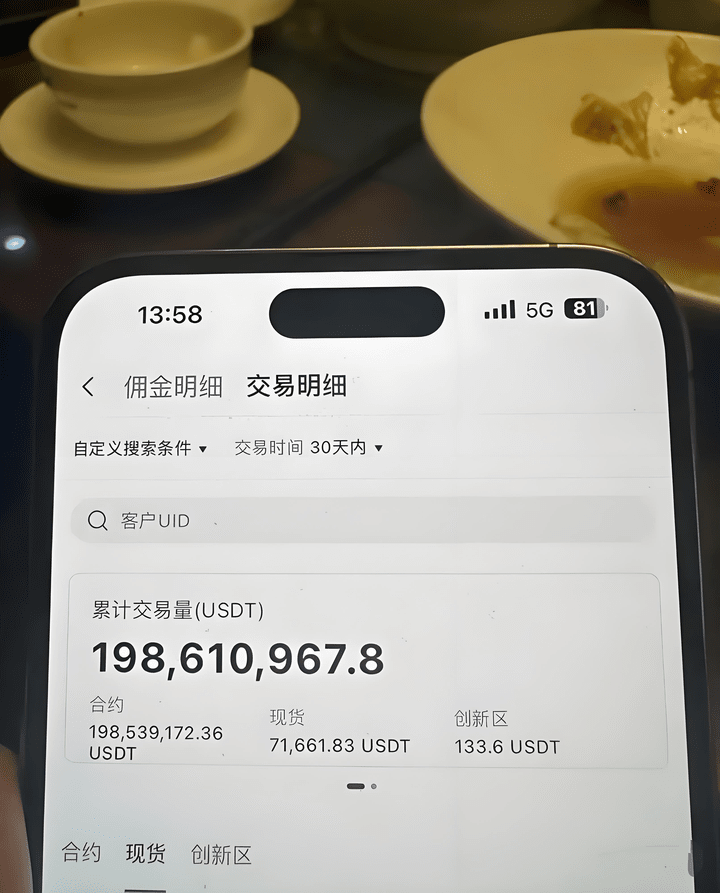
In the cryptocurrency space, many friends may not know how to interpret indicators and trading strategies, and those who do understand are very few. As the saying goes, 'one trick is enough to eat all over the world.' Mastering a technique that you understand is not difficult; the challenge lies in not wanting to learn and being unwilling to learn. Trading cryptocurrencies is not for others but for yourself. If you are willing to put in more effort, master it, and understand it, trading cryptocurrencies will not be as difficult as you imagine.
In addition to solid techniques, I strictly follow these 8 ironclad rules of trading:
1. Don't rush to rebound after a stop loss! Stop trading after consecutive stop losses.
When I first started trading contracts, the most common mistake I made was 'trying to recover immediately after a stop loss.' Once, I shorted Bitcoin, and after two consecutive stop losses, I lost $800. In a fit of heat, I thought 'the third time will definitely be right,' added leverage, opened a large position, and ended up liquidated, losing all my principal. Later, I discovered from the data that 78% of liquidation cases occurred during impulsive trades after consecutive stop losses.
Now I've set a 'double stop-loss circuit breaker mechanism': after two consecutive stop losses, immediately close the trading software and spend half an hour reviewing the trades—was it a misjudgment of the trend? Or was the stop-loss level set incorrectly? If I can't find the problem, I will remain sidelined for a day. The market never lacks opportunities; if the principal is gone, any opportunities that arise will no longer matter to you. Remember: stop loss is about controlling risk, not about 'failure'; rushing to rebound only leads to greater losses.
2. Don't believe in 'get rich overnight' nonsense! Never exceed 10% of your position.
Statistics from a certain contract trading platform sent chills down my spine: 92% of users who make full-margin trades will have their assets reduced to zero within three months. Newbies often treat contracts as 'ATM machines,' thinking 'going all in on one trade will make them rich,' but leverage is a double-edged sword; under 10x leverage, a 5% volatility can lead to liquidation.
I have seen the most tragic case: a brother took $50,000 and fully invested in altcoins, felt ecstatic when it rose 5%, panicked and held the position when it fell 5%, and ended up liquidating within half an hour, leaving less than $1,000 from $50,000. Now I strictly control my positions: I never open positions exceeding 5%-10% of my principal; with $50,000, the maximum position I open is $5,000. Even if I miss out on 10 market opportunities, as long as I can avoid one liquidation, I've outperformed most people. Trading contracts is a marathon, not a 100-meter sprint; steady and gradual is the way to survive.
3. Trading against the trend = going against your money! Never forcefully go against a one-sided market.
Last week, Bitcoin's 4-hour line plunged 15%, and some in the community shouted 'it's bottomed out,' fully investing to go long, resulting in three liquidations within three hours, crying that 'the market is unreasonable.' But is the market really unreasonable? In a one-sided market, trading against the trend is like a mantis trying to stop a chariot.
There is a golden rule to judge a one-sided market: look at the 1-hour candlestick chart. If there are 5 consecutive candlesticks closing bullish (or bearish) and the moving averages are diverging (the short-term moving average is significantly separated from the long-term moving average), this is a strong trend signal. At this point, do not think about 'buying the dip' or 'shorting the rebound'; following the trend or staying on the sidelines is the right way to go. Last year, Ethereum rose from $1,800 to $4,000; I adhered to the principle of 'not going against the trend' and only went long without shorting. Even if there were pullbacks in between, I did not open positions randomly, and I steadily earned three times.
4. Don't take action if the risk-reward ratio is less than 2:1! Don't be the fool who 'earns small and loses big.'
The death trap of countless retail investors: they hurriedly take profits after earning $1,000 but only painfully cut losses after losing $2,000. Over the long term, they 'earn less than they lose.' The scientific trading logic is: before opening a position, set a risk-reward ratio of at least 2:1— for example, set a stop loss at $500 and a take profit of at least $1,000. If this standard is not met, absolutely do not touch it.
I set a rule for myself: when opening the market software, first calculate 'how much to stop loss, how much to take profit.' If I find the risk-reward ratio is 1:1.5? I discard it immediately without hesitation. Last year, when trading SOL contracts, I originally wanted to go long at $100, but after calculating a stop loss at $95 (losing $500) and a take profit at $105 (earning $500), the risk-reward ratio was 1:1, so I decisively gave up. Later, when it retraced to $90, I had a stop loss at $85 (losing $500) and a take profit at $100 (earning $1,500); I entered the market only then and made a steady profit of $1,500. Remember: trading is not about 'making the right calls more often' but about 'earning more when right and losing less when wrong.'
5. Frequent trading = working for the exchange! Experts wait for the right moment.
Data from a leading trading platform was shocking: ordinary users trade an average of 6.3 times per day, while the top 10% of profitable traders only make 2.8 trades per week. When I first started trading contracts, I also loved to 'make my presence felt,' opening 10 trades a day, paying a lot in fees, but my principal kept decreasing. Later, I understood: frequent trading not only costs money but also exhausts one's mindset.
The market fluctuates every day, but 90% of the fluctuations are 'ineffective noise.' Experts wait for 'high certainty opportunities'— such as trend breakthroughs and resonance at key support and resistance levels. Now I only check the market twice a day (half an hour after opening and half an hour before closing), and do what I need to do at other times. Last year, there was a time when Bitcoin was flat for 10 days; I didn't open any positions, watching others lose back and forth in the sideways movement. I waited until after the breakthrough before entering the market; I made more profit in one trade than others made in ten. Remember: missing an opportunity is not regrettable; blindly entering the market is what is truly scary.
6. You can't earn money outside of your understanding! Only trade the assets you have thoroughly researched.
When Dogecoin surged 300% due to a tweet from Elon Musk, some in the group followed the trend and bought in, only to chase at the peak, and got liquidated when the price plummeted. Their loss was not due to luck but a lack of understanding— they didn't even understand the market capitalization or chip distribution of Dogecoin; why did they think they could make money?
The core principle of contract trading: only trade the assets you have thoroughly researched. I currently only trade three assets: Bitcoin, Ethereum, and SOL, each of which I have thoroughly studied in terms of their volatility patterns, major player habits, and key levels. I don’t touch unfamiliar assets no matter how much they rise because I know: money made in the short term based on luck will eventually be lost based on skill. Protect your skill circle to avoid the deadly trap of 'trading based on gut feeling.'
7. Holding positions is walking towards the abyss! If you're wrong, admit it; living gives you a chance.
The cruel truth of the leveraged market: holding positions = gambling with your principal. Under 10x leverage, price fluctuations are magnified 10 times; a 5% unrealized loss in a holding position can turn into a liquidation. Statistics from a certain contract community show that users who hold positions consecutively 3 times have a liquidation probability as high as 91%.
I have seen the most stubborn brother: going long on Ethereum, setting a stop loss at $3,000, thinking it would 'rebound' when it dropped to $2,900, withdrew the stop loss and held the position, resulting in a drop to $2,500 and liquidation, losing $200,000. Now I always set stop losses when opening positions, cutting them off when the time comes, and never 'wait a little longer.' If I'm wrong, I'll admit it; a 5% stop loss is always better than a 100% liquidation loss— as long as I'm alive, I can earn it back in the next trade.
8. Don't get cocky after making a profit! Withdraw half of your principal; treat the rest as 'play money.'
The weaknesses of human nature are most easily exposed when making profits: when people make money, they trade recklessly and increase leverage, resulting in profit withdrawals and even losses. I once suffered this loss: I made a profit of $50,000, feeling like 'I was a god,' fully invested in an altcoin contract, and lost all my profits in three days, plus an additional $20,000 of principal.
Now I have an iron rule: after every profit, immediately withdraw 50% of the principal. For example, if I earn $10,000, I first transfer $5,000 to my bank card, and the remaining $5,000 becomes 'play money,' so I won't mind losing it. This way, I can lock in profits while staying clear-headed—you'll find that when trading with 'profits,' your mindset is much steadier, and you won't operate randomly out of 'fear of losing the principal.'
Lastly, I want to say:
Contracts are not gambling; they are 'probability games with controllable risks.' The core of these 8 ironclad rules is to use rules to manage the weaknesses of human nature. Stop losses, position control, following the trend, waiting for opportunities, not holding positions, maintaining understanding, taking profits and withdrawing principal... If you do these well, you have already avoided 90% of the loss traps.
Remember: the winners in the contract market are not those who 'predict the market most accurately' but those who 'control risk best.' Losing less is earning, and being alive allows you to wait for the real opportunity. I hope you can walk steadily and profitably in the contract market with these 8 ironclad rules.
So how can we do well in cryptocurrency trading? Once a person enters the financial market, it's hard to turn back. If you are currently losing and still confused, and plan to treat cryptocurrency trading as a second career, you must understand the 'Bollinger Band indicator techniques.' Understanding and mastering it can help you avoid many detours, all based on personal experiences and insights. It is recommended to save this and ponder over it repeatedly!
Indicator Introduction.
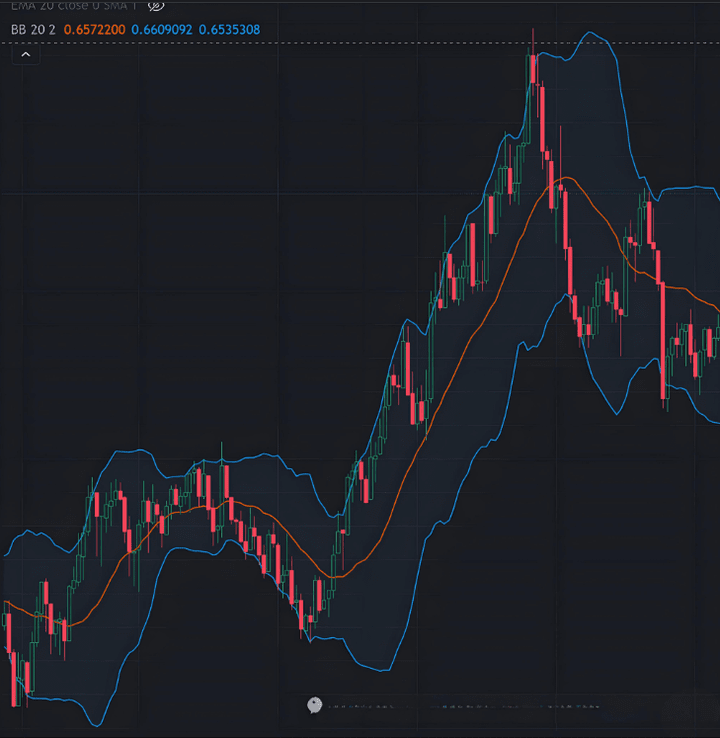
1. The principle of Bollinger Bands.
Bollinger Bands were created by the famous analyst John Bollinger.
Its principle is rooted in the normal distribution theory in statistics.
Although the short-term fluctuations of financial asset prices seem random,
But in the long run, it will exhibit regular fluctuations around a central value (mean).
This characteristic highly matches the feature of data dispersing around the mean in normal distribution.
1. Core statistical basis.
In the normal distribution curve.
About 68% of the data falls within the mean ±1 standard deviation range.
About 95% of the data falls within the mean ±2 standard deviation range.
About 99.7% of the data falls within the mean ±3 standard deviation range.
Bollinger Bands utilize this characteristic to treat price fluctuations as 'random variables that conform to normal distribution' and dynamically construct reasonable volatility boundaries for prices by calculating the mean and standard deviation of the price sequence.
John Bollinger found through extensive backtesting that
Using the 20-day moving average as the mean (middle band), adding ±2 standard deviations as the upper and lower bands.
Can most accurately capture the normal range of price fluctuations.
—— About 95% of the price data will fall within this range.
The portion that exceeds the range can be considered as 'abnormal volatility'.
This is also the core logic of Bollinger Bands for judging overbought and oversold conditions.
2. The underlying logic of dynamic adjustment.
Price fluctuations have 'aggregation characteristics.'
—— When the market is calm, the volatility is small (small standard deviation), and the bands narrow.
When the market changes dramatically, the volatility is large (large standard deviation), and the bands expand.
This self-adjusting characteristic allows Bollinger Bands to adapt to 'narrow fluctuations' during consolidation.
It can also cope with 'wide fluctuations' in trending markets.
It avoids the failure issue of fixed interval indicators in extreme market conditions.
2. The composition of Bollinger Bands.
Bollinger Bands are mainly composed of three bands: the upper band, middle band, and lower band.
Middle band: Usually a moving average line, the most commonly used is the 20-day moving average. It reflects the medium-term trend of prices, and prices generally fluctuate around the middle band.
Upper band: It is obtained by adding two standard deviations to the middle band. It represents the resistance level for the price; when the price rises near the upper band, it may encounter resistance.
Lower band: It is obtained by subtracting two standard deviations from the middle band. It represents the support level for the price; when the price drops near the lower band, it may receive support.
These three bands form a channel-like area where prices mostly operate within this channel.
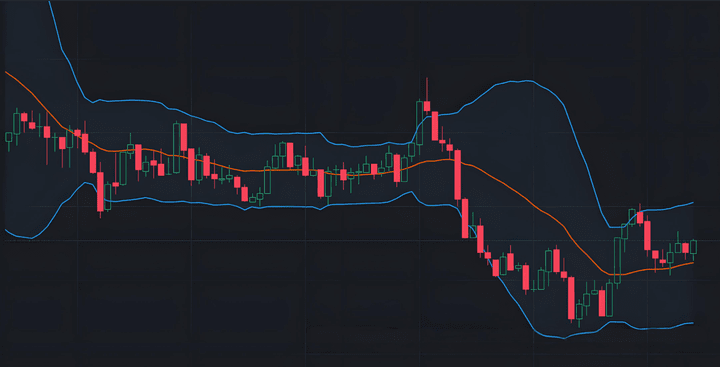
3. The core usage of Bollinger Bands.
Stock prices operate within the bands: When prices fluctuate between the upper and lower bands of the Bollinger Bands,
And when the middle band shows a certain trend, it indicates that the price is in a normal fluctuation state.
If the price runs upward along the middle band and fluctuates between the middle and upper bands,
Typically indicates an upward trend; if the price runs downward along the middle band,
And if it fluctuates between the middle band and the lower band, it may be in a downtrend.
Price breaking the bands: When the price breaks the upper band, it may indicate that the market is in an overbought condition, and there is a possibility of price retracement afterwards.
When the price breaks the lower band, it may indicate that the market is in an oversold condition, and there is a possibility of price rebounding afterwards.
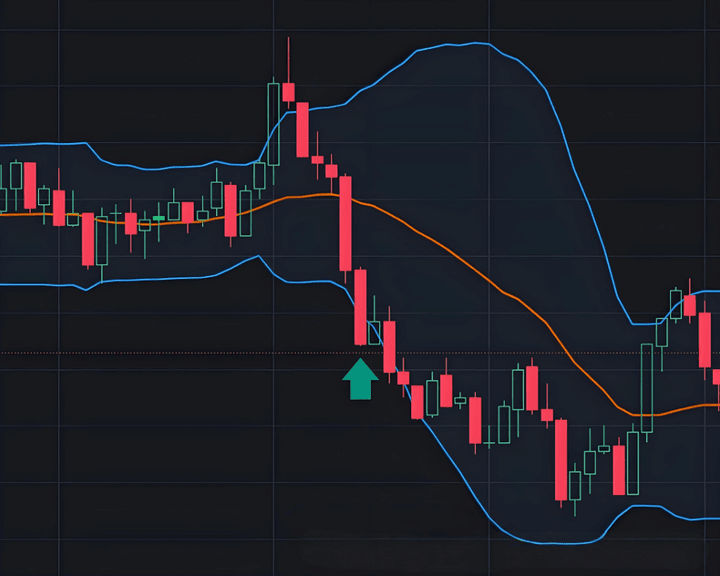
As shown in the figure, buying when it breaks down will only lead to greater losses.
However, it is important to note that a breakthrough does not necessarily mean a trend reversal; sometimes it may signal trend acceleration, which needs to be judged in conjunction with other indicators.
Band contraction and expansion:
When the Bollinger Bands contract, it indicates that the price volatility is decreasing, and the market is in a consolidation phase, which may lead to significant volatility in the future.
When the bands expand, it indicates that the price volatility is increasing, and the market trend may be strengthening.
4. The applicable angles of Bollinger Bands and applicable markets:
Bollinger Bands are applicable to various financial markets such as stocks, futures, and foreign exchange, as the prices in these markets exhibit certain volatility patterns that can be analyzed using Bollinger Bands.
Applicable periods: Whether for short-term intraday trading, medium-term swing trading, or even long-term trend judgment, Bollinger Bands can play a role.
However, the parameters of the Bollinger Bands may need to be appropriately adjusted in different periods.
Limitations: Although Bollinger Bands are very useful, they also have certain limitations.
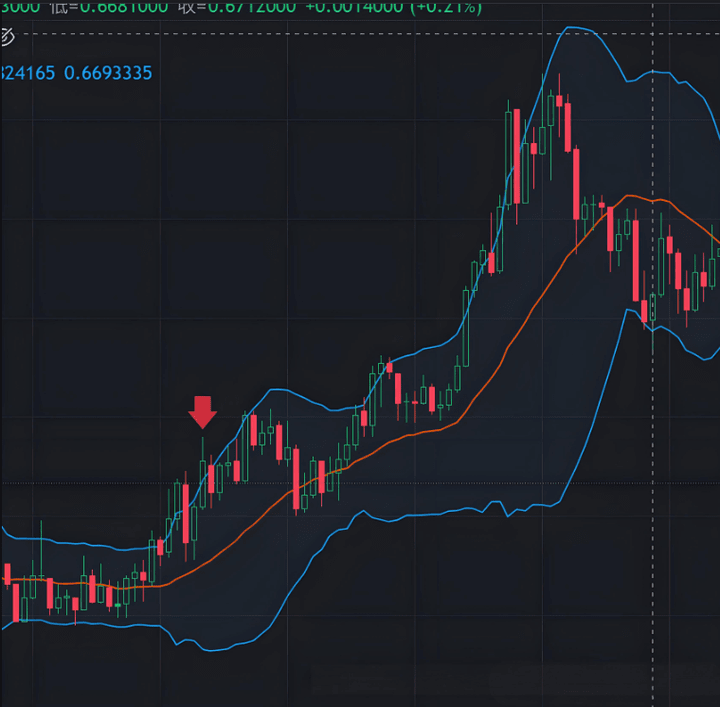
Breaking upwards does not mean the price will retrace.
It cannot be used as the sole basis for trading decisions and should be combined with other indicators such as volume and MACD to improve the accuracy of judgments.
Additionally, in extreme market conditions, prices may remain outside the Bollinger Bands for a long time, at which point the reference significance of the Bollinger Bands will diminish.
To summarize: Bollinger Bands are a simple and effective technical indicator. Mastering its principles, components, core usage, and applicable perspectives can provide strong support for our investment decisions.
The above are the most practically significant Bollinger Band strategies. These techniques can be applied in different markets, different varieties, and different periods, suitable for most traders to learn and use.
No matter how diligent a fisherman is, he won't go out to sea during a stormy season but will carefully protect his fishing boat. This season will pass, and a sunny day will surely come! Follow Yan An, who gives you both fish and fishing skills; the door to the crypto world is always open. Only by following the trend can you have a life in line with the trend. Save this and remember it in your heart!